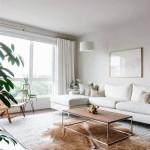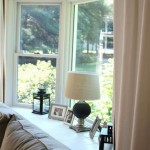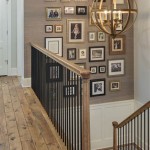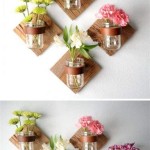Maximizing Space and Style: How to Decorate a Small Passage
A small passage, often overlooked and treated as a mere thoroughfare, presents a unique design challenge. However, with thoughtful planning and execution, these spaces can be transformed from functional corridors into stylish and inviting entryways or connecting zones. Successfully decorating a small passage involves understanding how to visually expand the space, incorporate functional elements, and maintain a cohesive design aesthetic that complements the adjacent rooms. The following guidelines offer a comprehensive approach to achieving a beautiful and practical passage.
1. Optimize Lighting to Enhance Spaciousness
Lighting plays a crucial role in shaping the perception of a space. In a small passage, insufficient illumination can make the area feel cramped and confined. The goal, therefore, is to maximize light, both natural and artificial. Consider the following strategies.
If natural light is available, avoid heavy window treatments that block the sun. Sheer curtains or blinds that can be easily adjusted to control glare are excellent options. Strategically placed mirrors opposite windows can reflect natural light, further brightening the space and creating an illusion of greater depth. When it comes to artificial lighting, a layered approach is generally most effective. A flush-mount ceiling fixture provides general ambient light. Recessed lighting can also be incorporated to create a clean, uncluttered look. Additionally, wall sconces or strategically placed table lamps can offer task lighting and contribute to the overall ambiance. Avoid using overly ornate or bulky light fixtures that can visually clutter the passage. Opt for streamlined designs that complement the overall aesthetic.
2. Strategic Use of Color and Patterns
Color and pattern choices can significantly impact the perceived size and feel of a passage. Light, neutral colors are generally recommended as they reflect light and make a space feel open and airy. White, off-white, pale gray, and soft pastels are excellent choices for walls and ceilings. These colors create a sense of spaciousness and allow other design elements, such as artwork or furniture, to stand out. Utilizing the same wall color as the adjoining rooms further extends the visual space, creating a sense of continuity.
If incorporating patterns, it is vital to do so judiciously. Bold or overly busy patterns can overwhelm a small space. Consider using subtle patterns on accent walls to add visual interest without shrinking the space. Vertical stripes can visually elongate a passage, while horizontal stripes can make it feel wider. However, be mindful of the width of the passage, and scale the stripe size accordingly. Textured wallpaper can also introduce visual interest and depth. When selecting patterns, ensure they complement the existing color palette and design style of the surrounding rooms.
3. Maximizing Storage and Functionality
Passages often serve as transitional spaces, and it can be beneficial to integrate storage solutions to maximize their functionality. Careful planning is essential to avoid creating a cluttered and disorganized appearance. Narrow console tables or floating shelves are ideal for providing surface space without taking up valuable floor area. Drawers and cabinets within these pieces offer concealed storage for keys, mail, or other small items.
If the passage leads to a coat closet, consider reorganizing the existing storage to maximize efficiency. Install additional shelves or add hooks to improve the utilization of vertical space. Built-in storage solutions, such as custom shelving or cabinets, can be a great option if the budget allows. These solutions can be tailored to the specific dimensions of the passage, providing a seamless and integrated look. Even adding hooks to the wall can provide a space to hang coats and other accessories.
4. Furniture and Décor Considerations
The selection of furniture and décor items is crucial in maintaining a balanced and functional space. A well-placed runner rug can define the passage and add warmth. Be mindful of the width of the passage when selecting a rug. The rug should fit within the available space and leave enough exposed flooring on either side for a balanced look. Avoid placing large or bulky furniture pieces that can restrict movement. Instead, opt for narrow, streamlined furniture that complements the proportions of the passage.
Artwork can add personality and visual interest to the space. Hang framed prints, paintings, or photographs on the walls to create a focal point and reflect the homeowner’s style. Mirrors can further enhance the sense of spaciousness and reflect light. When choosing décor, consider the overall style of the home and select items that complement the existing design theme. Avoid overcrowding the passage with too many decorative objects. Less is often more when decorating a small space.
5. Incorporating Mirrors and Reflective Surfaces
Mirrors are powerful tools in the art of interior design, particularly in small spaces. Strategically placed mirrors can amplify light and create the illusion of depth, making a passage feel larger and more open. A large mirror placed at the end of a passage can visually extend the space and create a focal point.
Consider the placement of the mirror carefully. Avoid placing mirrors where they reflect unsightly views or create glare. Mirrors can be framed or frameless, depending on the desired aesthetic. A framed mirror adds a touch of elegance, while a frameless mirror offers a clean, modern look. In addition to mirrors, consider incorporating other reflective surfaces, such as glass or metallic accents. Glass-topped tables, metal picture frames, or mirrored accessories can further enhance the sense of light and space. Choosing reflective materials will subtly brighten the space.
6. Maintaining a Consistent Flow
In decorating a small passage, it's important to maintain a cohesive flow with the adjoining rooms. The passage serves as a connection point between different areas of the home, and the design should reflect this role. The color palette, flooring, and style cues should be consistent or complement the design of the adjacent spaces. This will create a sense of visual continuity and make the home feel more unified.
If the passage features a different flooring material than the adjoining rooms, consider using a transition strip to create a clean and visual transition. This keeps visual breaks to a minimum. The choices made in the passage should follow the established design language of the overall home. The use of matching trim, moldings, and hardware helps unify the aesthetic. Maintaining consistency in design elements ensures a seamless transition from one room to the next, creating a harmonious living environment.
7. Defining the Purpose
While hallways are primarily functional spaces, it’s possible to define their purpose or create interest. For example, a long, boring hallway can be transformed into a gallery by displaying a curated collection of artwork. This not only adds visual appeal but also creates a conversational element for visitors. Consider adding wall-mounted shelves to turn the hallway into a mini-library, further integrating the space with your needs.
Another option is to create a drop zone at the entry of a hallway. This can involve adding a console table with a mirror, a storage bench, or even a small coat rack. The goal is to provide a functional area for dropping keys, bags, and mail, making the hallway more useful. The key is to think beyond the basic thoroughfare and consider how the space can be customized to offer greater utility and aesthetic value.

9 Clever Ways To Maximise A Tiny Passageway

Decorating Ideas For Your Small Hallway Narrow Christina Maria Blog

10 Clever Narrow Hallway Ideas To Transform Your Space Decoholic

Decorating Ideas For Your Small Hallway Narrow Christina Maria Blog

Pretty Passage Design Ideas To Decorate Hallways At Home

130 Best Narrow Hallway Decor Ideas House Design

200 Modern Entryway Decorating Ideas 2025 Living Room Hall Wall Design Home Interior

20 Interior Design Ideas For Halls To Create A Passage Paradigm

Pretty Passage Design Ideas To Decorate Hallways At Home

20 Interior Design Ideas For Halls To Create A Passage Paradigm







